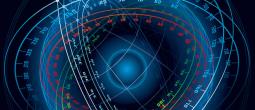

Navigation Systems

Navigation involves management of the vessel’s movement in space, including faster-than-light travel between stellar systems and maneuvering the vessel around other vessels and objects at subluminal speeds.
All navigation requires knowledge of the vessel’s current location, speed and heading as well as the location and bearing of any vessels or objects in surrounding space. Movement over any distance necessitates establishing a heading that will get the vessel to the intended destination.
NAVIGATION CONTEXTS
There are three main navigation contexts.
SUPERLUMINAL
Superluminal navigation involves relativistic faster-than-light travel, enabling transit between star systems within hours or days. The vessel’s superluminal engine utilises powerful fields which warp space-time, significantly reducing the effective distance the vessel needs to travel between two points.
Travelling in compressed space-time takes the vessel out of phase with surrounding space. This means the vessel is undetectable but also means that sensor readings or communication outside the warp field are not possible.
IMPULSE
The vessel’s main engines provide thrust using magnetoplasma impulse technology. This uses superheated plasma to create a base level of thrust, which is accelerated using magnetic fields arranged in a carefully configured impulse pattern. Referred to colloquially as impulse engines, they can accelerate the vessel to 0.2c – one-fifth of the speed of light.
The impulse engines are also capable of varying the direction of thrust so as to alter the vessel’s heading. This process of turning the vessel while underway is referred to as maneuvering. This makes the powerful thrust of the impulse engines available to alter the heading of the vessel’s considerable mass relatively quickly and efficiently but also requires the vessel to be under way.
REACTION CONTROL (RCS)
The Reaction Control System (RCS) uses a number of small chemical rocket engines located around the vessel to make small and precise position or heading changes. RCS is used for establishing orbit, rendezvousing with another vessel or for docking.
RCS can alter the vessel’s position from stationary, but is not powerful enough to maneuver the vessel at impulse speeds








